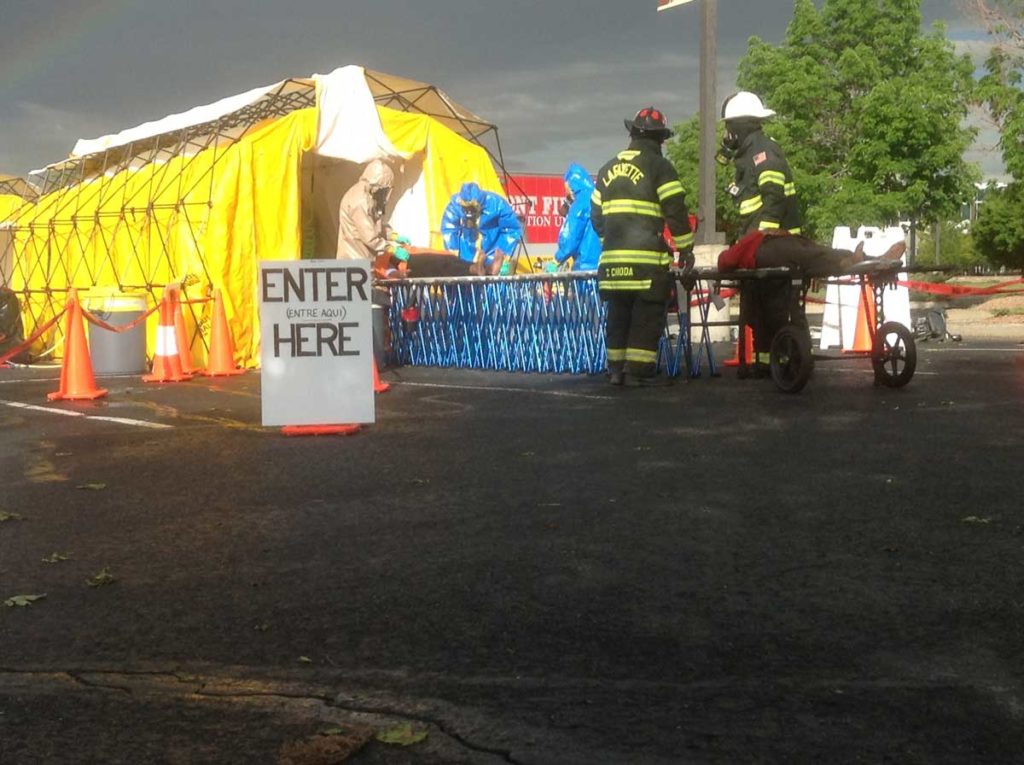Following decades of false starts, a large county-wide hazmat team is finally up and running. Careful and deliberate planning from the start and a focus on training and interagency relationships have been key to the team’s early success.
Boulder County, Colo. spans 740 square miles and has a population of more than 325,000. From 1940 to 2000, the county saw population growths ranging between 15% and 77%. That growth has tapered off to 8% in 2010 and 10% in 2019. With explosive population growth came the need for a comprehensive hazmat unit.
Building the 95-member Boulder County Hazmat Team (BCHMT) didn’t come easy or quick. But it was done with a good deal of planning.
The introduction of new leadership within some local fire departments over the past 7 years and the recognition for the need of a countywide hazmat response model helped the concept finally take hold. Many of those same fire chiefs, members from the Sheriff’s office, Boulder County OEM, the three local dispatch centers, Boulder County Public Health and a few attorneys spent more than a year forming the basic inter-government agreement that would ultimately govern the Boulder County Hazmat Authority.

Eventually they formed an advisory committee to develop the operational side of the Authority and to run the day-to-day operations. Today, the advisory committee reports to a five-chair board of directors with oversight of BCHMT.
The Boulder County Hazmat Team consists of the 10 DERAs in the county. Six of those fire-based DERAs plus the Boulder County Sheriff’s Office provide funding and personnel, the other four DERAs provide funding only.
The response model requires each agency to staff a minimum number of hazmat technicians 24/7/365 to maintain 13 technicians who will be on scene within 60 minutes. However, on any given day they will have 15 to 20 technicians arrive as part of the initial response. There are typically another 10 to 15 technicians on duty who can be brought in to join that initial response if needed. From there the team can call back as many technicians as needed.
All the members have a minimum of technician-level training, with several members holding various specialist certifications. Keeping all these members, who are spread across a large area and several agencies, well trained is critical.
The team offers monthly training with the same topic covered twice to allow more members to catch one of the two training sessions. And that frequently involves training with other agencies.

The team has developed different training models ranging from virtual lectures to lesson plans that can be taken back to individual agencies for smaller group trainings. They also run scenario-based trainings that consist of one incident duplicated in two or three different locations on the same training ground so the members are spread into separate teams, allowing everyone to be hands-on engaged.
That training model was put to the test during the pandemic’s lockdown.
Pre-Covid-19, the team’s biggest challenge was staying ahead of the large numbers of people attending monthly trainings. They were routinely hitting over 60 people, which became a challenge to find ways to engage so many people and keep them interested.
New training models were developed and thinking outside of the box became normal. The challenge of a post-COVID world is getting everyone back engaged in training and getting attendance numbers back up. They’ve only been able to hold in-person trainings again for the past few months — they remain in the thick of this challenge.

But the four-year-old team’s road has had successes as well as challenges. Top among them are the relationships they build during their formation, training and incidents.
Those relationships include not only the agencies tied to the BCHMT, but also the local, county, state and federal agencies they work with on a consistent basis. Many of their full-team callouts result in working with upwards of 12 to 15 different agencies. They’ve build great relationships with those agencies through consistent training and communication.
Because the Authority has its own funding streams, it must buy and maintain its fleet of vehicles and necessary equipment.
The custom-built command vehicle (2155) is set up with a small research area and built in generator runs the several computers with various hardware and software applications with an onboard hot spot for internet capability. It has a built-in shower and bathroom as well as a small refrigerator and microwave for those extended callouts. And it carries a large contingent of gas meters, cal gas, Level A and B suits, SCBAs, decon and sampling equipment.
BCHMT also has apparatus spread amongst the other fire agencies tied to the team. They just began purchasing their own apparatus this last year. In addition to Longmont 2155, they have a truck/trailer combo (2257) attached to Mountain View Fire, a hazmat rig (2651) with Lafayette Fire, a decon/mass decon truck (2751) with Louisville Fire, and the newest addition to the BCHMT fleet, 2527, an F350 truck/trailer combination bearing the team colors and logo, located with Boulder Fire.

Boulder Rural Fire maintains the team’s training trailer and provides a dedicated ambulance (2321) that will bring an AHLS-trained paramedic and EMT, of which at least one is also a hazmat technician. Orders this year for two more F350 truck/trailer combinations have been placed. These will replace units with Lafayette Fire and Boulder Rural Fire.
The team has a full Booming trailer set up with booms, skirts, pads, and a Kubota as well as a trailer dedicated to material identification. This trailer is used as a safe place for identifying samples. It’s equipped with a built-in table, cabinets, exhaust fan, generator, and interior and exterior lights with an awning.
Area responders have been waiting a long time for such a hazmat team. And now that it is operational, people can see why it was worth the energy to build it.



